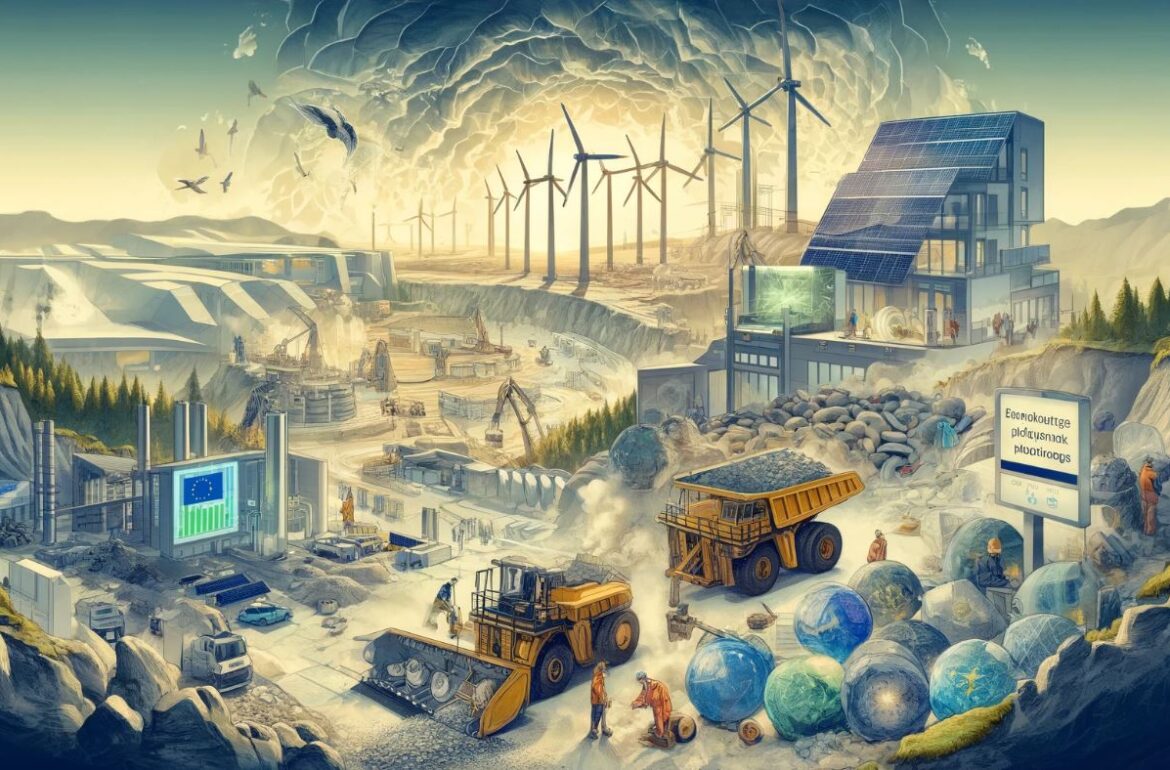Tallinn University of Technology scientists exploration of rare earth elements in Estonian phosphorites provided one of the first studies to understand the genesis of this type of deposit, bringing novel and transferable knowledge to geologists worldwide.
The increasing demand for green technologies and the need for sustainable resources led to a worldwide gradual reconsideration of mining strategies. They highlighted non-conventional deposits or secondary resources (e.g., by-products) as a potential solution for the Critical Raw Materials (CRMs) crises. Rare earth elements (REE), which are comprised of 15 Lanthanides, Yttrium (Y), and Scandium (Sc); are the CRMs with the highest supply risk in the European Union and are crucial for the energy transition.
They are required to produce wind turbines and permanent magnets and are employed in various industries and high technologies (batteries, catalysts, metallurgy). Another issue encountered in Europe is the sourcing of phosphorus, one of the main components of fertilisers. Currently, only 10% of consumed phosphate rock originates from the EU (Finland, Silinjarvi mine), while 100 % of the phosphorus is imported, mainly from Kazakhstan and China. These challenges have raised renewed interest in Estonian phosphorites as potential sustainable sources of REE as P by-products.
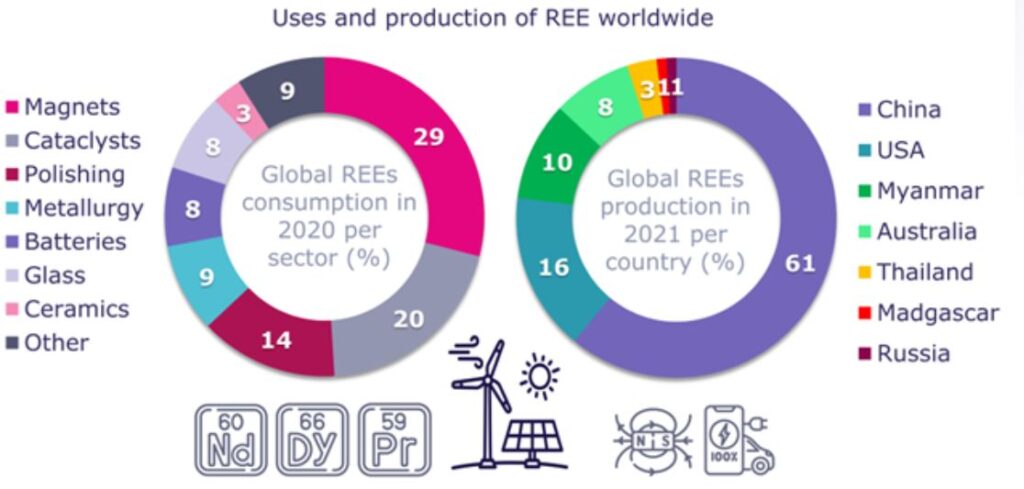
Estonian phosphorites are characterised by sandstone shell fragments, which accumulated in a shallow sea during the Lower Ordovician period, -485 to -470 Ma ago. A phosphate of the apatite-group mineralises the shells (Ca5(PO4)3(OH,Cl,F), which contains the REE in low concentrations. Presently, this type of deposit is little studied and poorly understood, and numerous projects have been undertaken to investigate them.
The Mineral Resources and Applied Geology Division of TalTech’s Geology Department is engaged in the characterisation and understanding phosphorite formation mechanisms and REE enrichment and has published their findings in the Journal for Geochemical Exploration. The main focus of the study has been the Toolse deposit in the region of Rakvere. Geologists analysed drill-cores profiles for elemental and mineral contents to build a general ore model and conducted microscopic measurements at the University of Oulu, Finland.
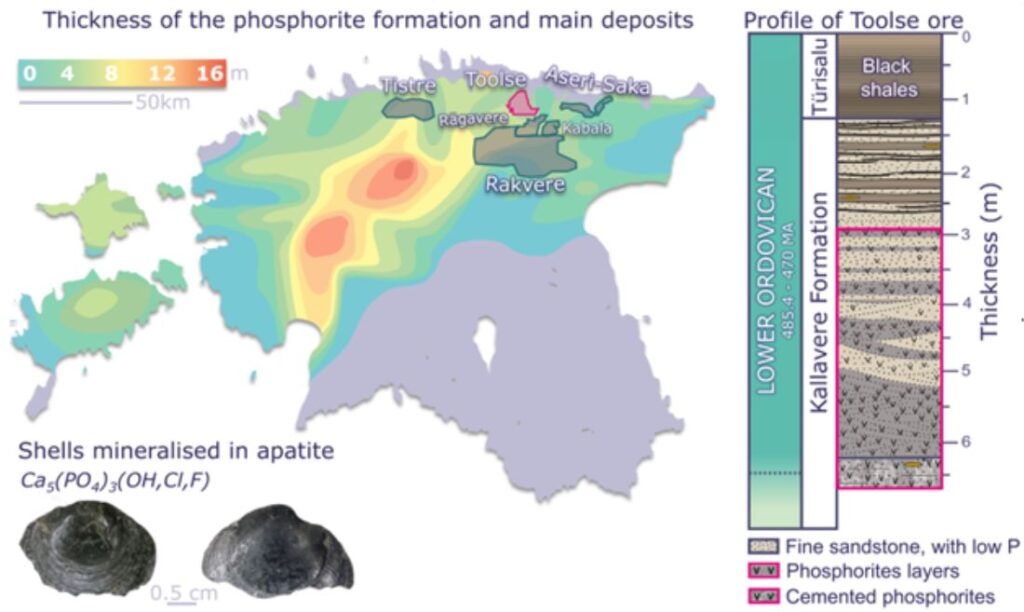
The REEs distribution is homogenous, showing little variations depending on apatite content. The average whole rock grade in the studied part of the Toolse deposit is 600 ± 200 ppm with 27% apatite per 10cm horizon, with a maximum of 1200 ppm and 60% apatite. The main REEs are Ce (30%), Y (23%), Nd (15%) and La (13%). The MREE (11%) content is proportionally higher than other sedimentary deposits. The obtained REE distribution is an asset, as the most abundant are those with the highest economic value. A further advantage of Estonian phosphorites, compared with other deposits of the same type, is their low content of so-called toxic elements, such as U, Cd and Zn, thus reducing later potential pollution risks.
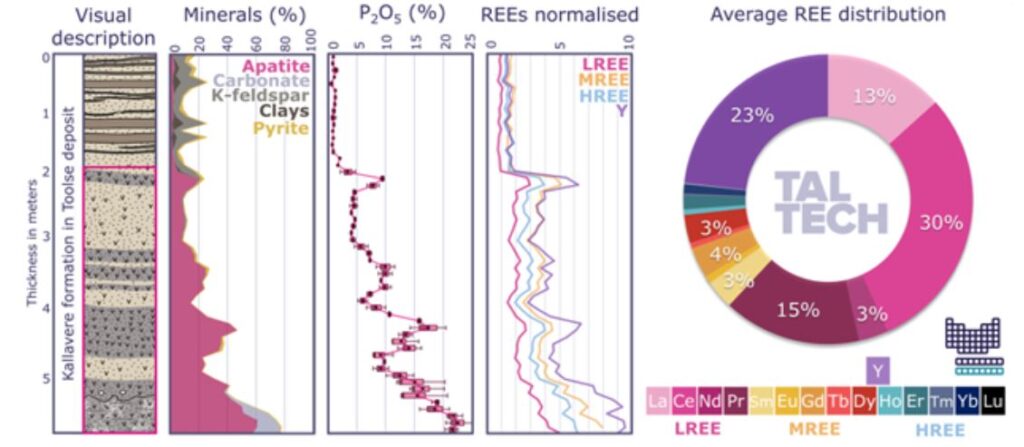
Besides exploring resources, geologists investigated the genesis of the phosphorite formation using textural analyses and REE. Phosphorite samples were analysed with microscopy techniques, and geologists discovered interesting features. Shells originate from organic tissues and poorly crystallised minerals, and, oppositely, massive and well-crystallised apatites were found. These unusual textures indicated an intense recrystallisation during the deposit formation.
Moreover, elemental zonations were observed in apatite and carbonates, peculiarly for iron (Fe) and manganese (Mn). This information brought a first understanding of the ore formation drivers, as iron and manganese particles are known to absorb dissolved REE in seawater and, here, indicate cycles of water fluxes in the sediment.
To go further, REEs were employed to decipher different formation stages of deposits. These elements can record signals of chemical variations in fluids or water bodies, such as the oxygenation stage, and their contents indicate was the nature of the precarrier, or hoster, REE- phases (oxides, particules, organic matter) and in which conditions the REE have been accumulated. REE are usually divided into three groups to better decipher their variability:
- Light REE (LREE, from La to Nd),
- Middle REE (MREE, from Sm to Dy),
- Heavy REE (HREE, from Ho to Lu).
Yttrium (Y) is a specific element; however, it is often associated with the HREE group. LREE tends to be associated with Mn particles, MREE with Fe particles, and Y is abundant in shallow water with high oxygen content.
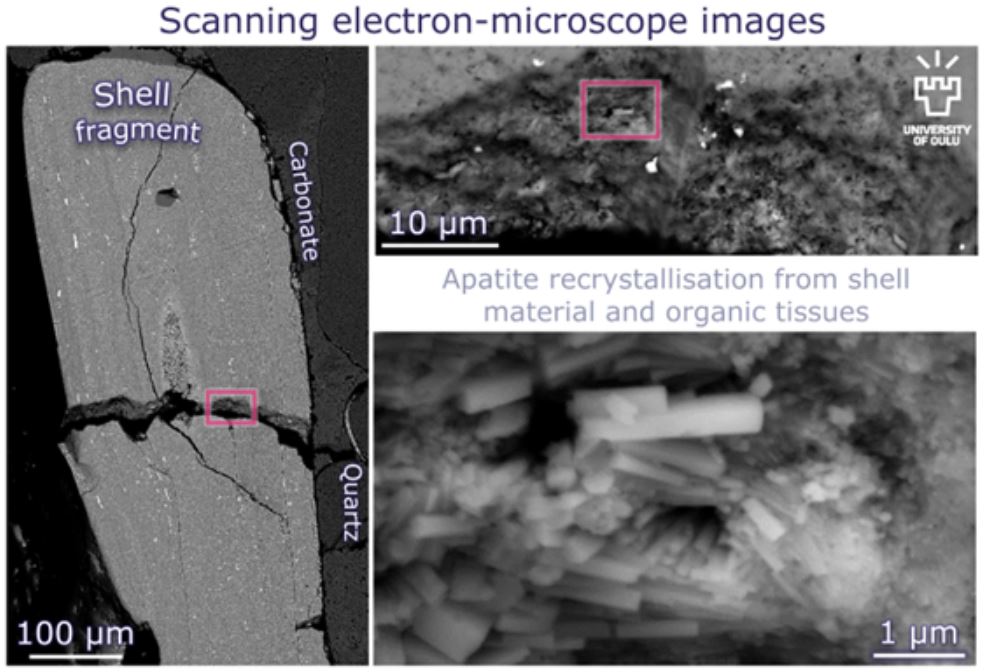
Geologists reconstructed a multi-stage history of phosphorite formation, and the evolution of REE signals was normalised to the seawater content reference to visualise the enrichment progress. Estonian phosphorites deposited in the coast of a shallow sea, due to the transport and accumulation of shells and deep-water rich in elements, such as Mn and Fe particles. During the deposition, apatites were depleted in REE, corresponding to the ‘initial’ shell signal. At the beginning of the sedimentation and while the water was rich in oxygen, a first REE uptake was observed, leading to a Y peak.
As the shells were progressively buried, the oxygen content dropped significantly, releasing manganese phases in porewater and a LREE enrichment in apatite. Further, when the oxygen content was depleted, the iron particles dissolved and enriched apatites in MREE. These cycles repeated multiple times, thus progressively forming the phosphorite deposits in Estonia.
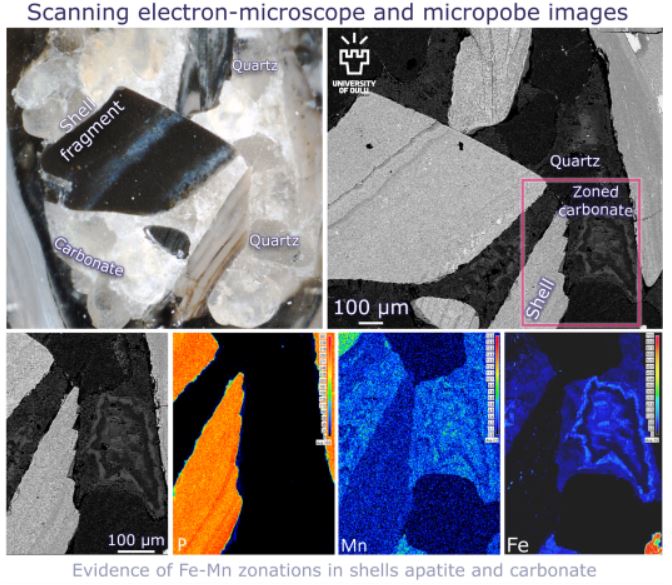
The exploration of rare earth elements in Estonian phosphorites provided one of the first studies to understand the genesis of this type of deposit, bringing novel and transferable knowledge to geologists worldwide. Investigating Estonian deposits opened new perspectives for critical materials resources in Europe and bases for further research projects in various fields.
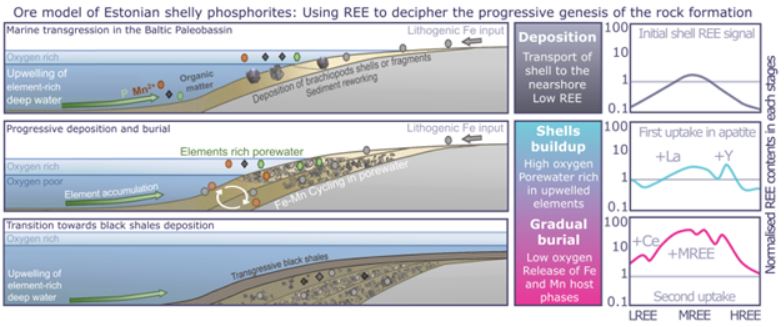
This article is written by Sophie Graul and was originally published on the TalTech (Tallinn University of Technology) website.
Why settle for a carbon footprint when you can have a solar-powered dance step? Read more from our website about how Katriin Kristmann is dreaming of a solar park on the Moon!
 Back
Back